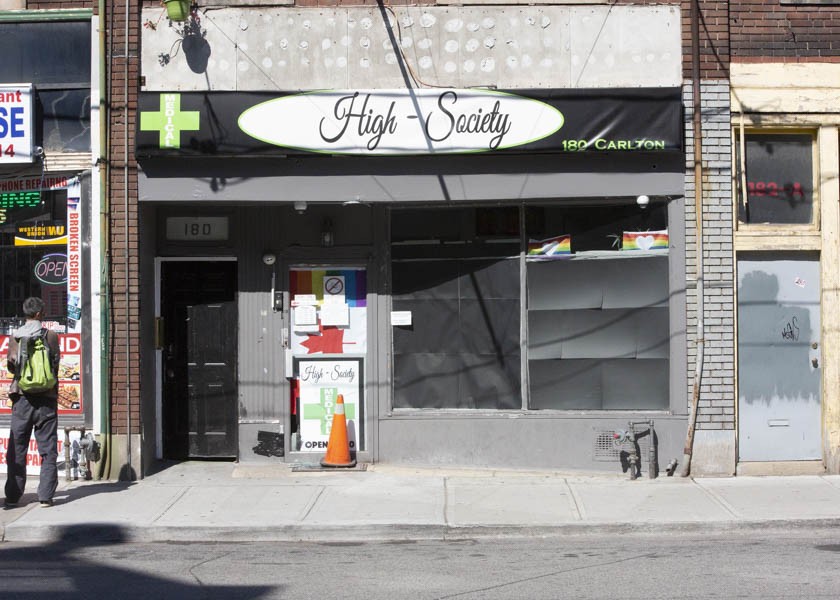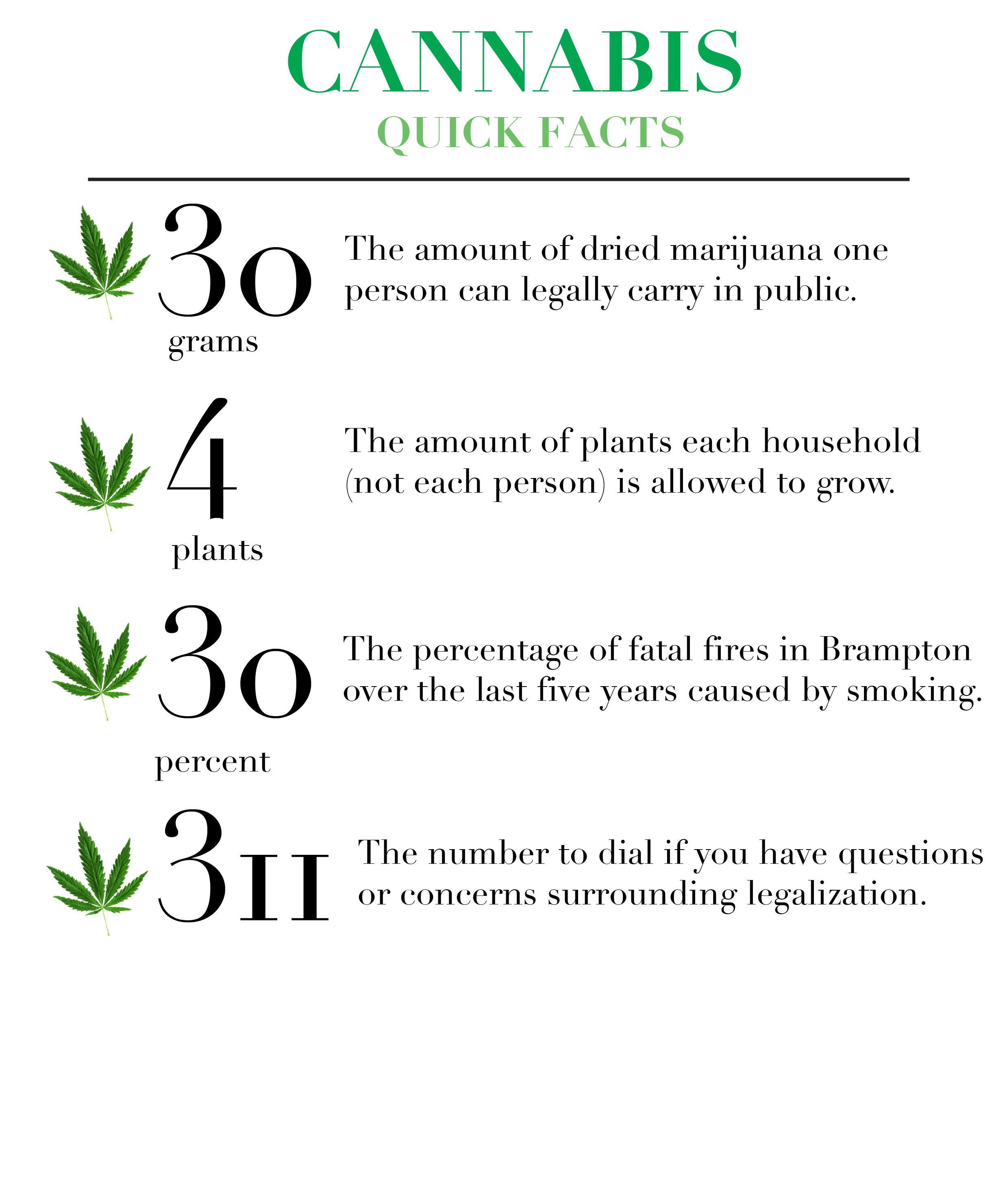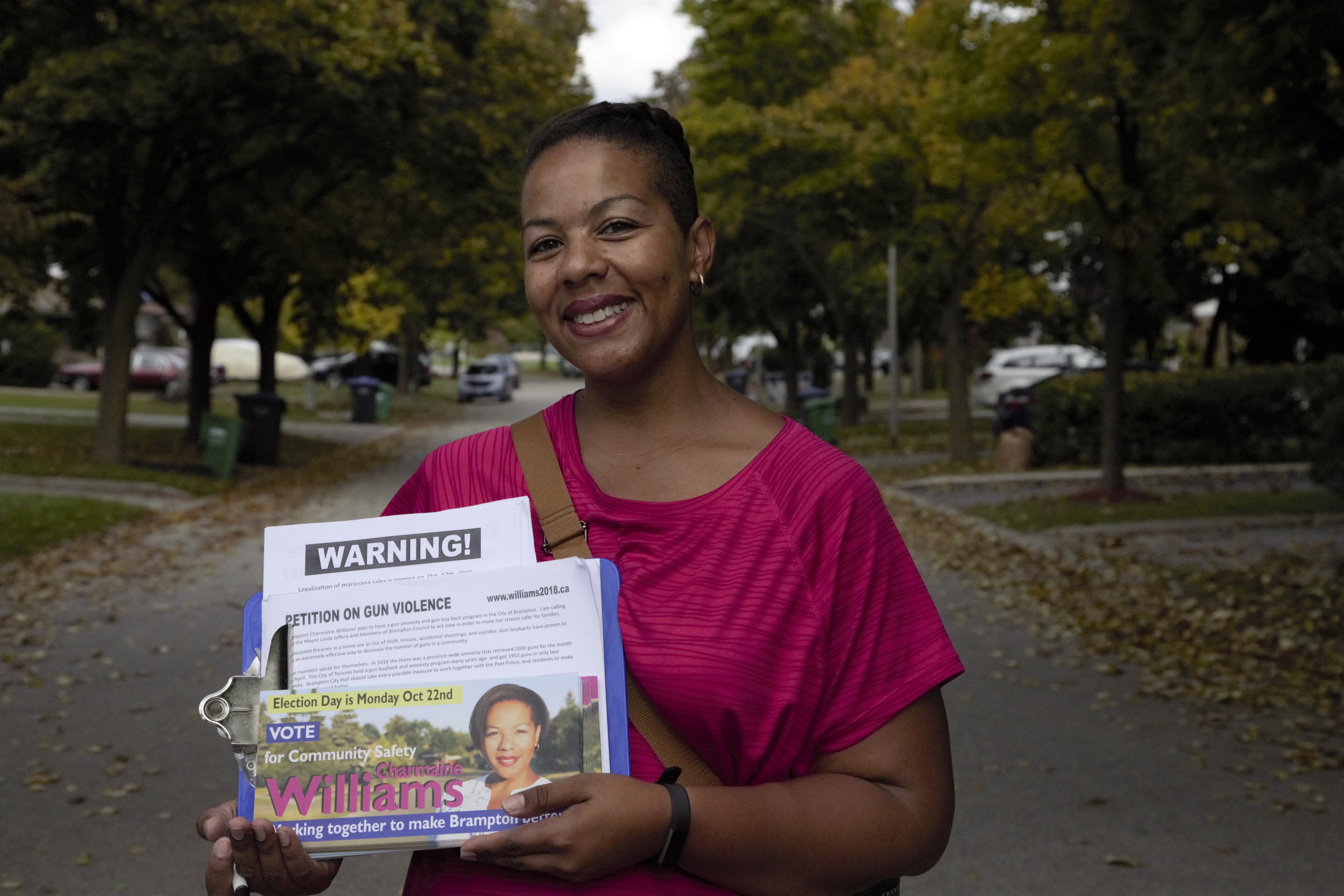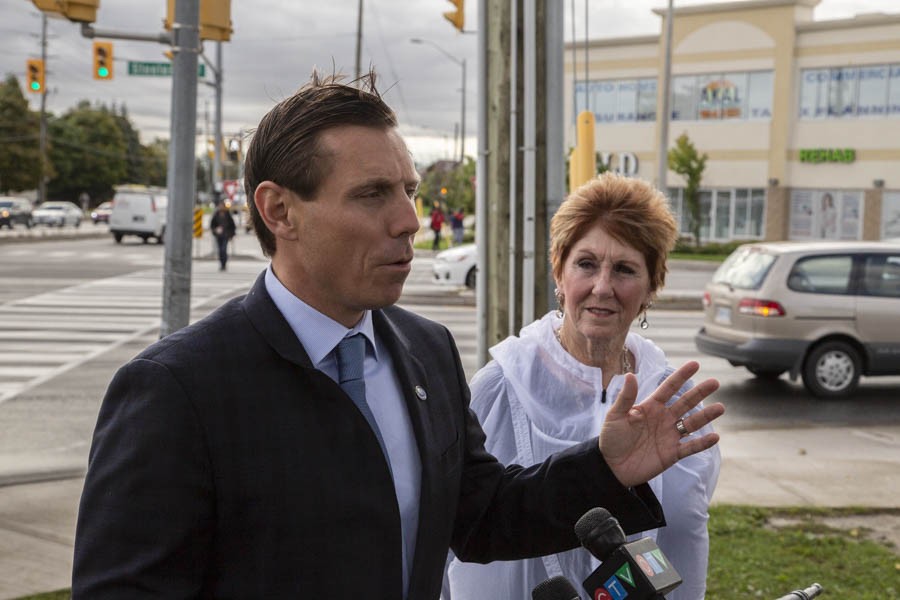
With community torn over cannabis new Brampton council will have to make quick decisions
Sprinkle down a rich mix of inflammatory debate about public safety, black-market dealings and enforcement issues, roll it up in the promise of a green tax-revenue payback, and you have the cannabis debate that is set to land, smoking hot, on the desk of Brampton’s new councillors after they are sworn in on Dec. 3.
Brampton is among the hundreds of Ontario municipalities still juggling the question of whether to allow private cannabis retail stores within the city once the province opens the door to legal pot shops next April, as currently planned. Cities have been feeling their way through the haze of this debate for months, ever since the newly elected Progressive Conservative government under Premier Doug Ford unceremoniously quashed the Liberal plan to restrict sales to LCBO-like regulated cannabis shops.

The caveat in the sudden change was that municipalities would be allowed to opt out of allowing such stores within their boundaries as long as they do so by Jan. 22, 2019. It’s not clear how many have come to a consensus on this topic. Richmond Hill, Markham and King Township have all definitively opted out. Richmond Hill cited a lack of interest from residents in the community, and King’s mayor pointed to potential enforcement costs and the possibility that these shops would merely become the focus of drug traffickers who would undercut provincial prices, a claim that is not supported by evidence so far.
The new provincial legislation, which came into effect in October, allows municipalities to establish their own rules on a variety of guidelines, from choosing where shops would be allowed and where the use of cannabis is allowed to how many shops will be allowed.
One thing is certain, when Brampton City Council — with five brand-new members — sits down in chambers after the swearing in on Dec. 3, it will have only 48 days to make decisions, including creating a licensing and enforcement model for the stores.
Some new members of council, noting the timeline, have already made up their minds. Charmaine Williams, newly elected to Wards 7 and 8, believes the city should opt out for now, a decision that would allow more time to gather information. Under the province’s current guidelines, there is nothing to stop municipalities from opting back in at a later date.

A comprehensive report on how other municipalities are handling the new stores, including information on safety parameters and siting criteria, would be critical data for councillors to see before making a decision, Williams says. And that’s information that would only come out of initially watching from the sidelines.
“Going and doing research in the beginning stages, I think, would be the smartest thing,” said Williams, who noted she would be in favour of the stores providing a proper set of guidelines and making sure safety measures were in place. “We really need to look at this with a very clear eye. I don’t want us to get excited by the potential economic gains from it. There are so many different pieces we need to look at.”
Brampton city staff are analyzing council’s options, with their findings to be collected into a report for the Dec. 5 agenda. Included will be the results of a public opinion survey commissioned by the city, conducted both online and via telephone, gauging the public’s attitude toward allowing the stores and asking how those who choose to use cannabis would like to purchase it in the future. The survey is being conducted by a third party firm.
“I’m so thrilled that the city has taken it on and put out the public survey,” Williams said. She noted that during her time door-knocking on the campaign trail, perhaps 70 to 80 percent of residents she spoke with were not in favour of cannabis retail stores in Brampton. “This is major. We just need to make sure that we are considering public opinion.”
The debate is bound to draw strong opinions on both sides. Mayor-elect Patrick Brown has previously told The Pointer he won’t ignore the reality of the situation.
“The fact is that cannabis is a recreational drug of choice for many in our city,” he said. “Ignoring reality will simply push buyers into neighbouring communities that do have retail locations, returning to Brampton to use, or, even worse, using in these other municipalities and driving while impaired to return back home to Brampton.”

Those comments suggest Brown might be on board with opening the door for retail pot shops. He has also stressed the need for proper, enforceable regulation to control the use and sale of legal marijuana, to ensure it does not jeopardize public safety.
“My position is clear: Legal cannabis retail locations should be tightly controlled through bylaw: e.g. no shops near schools, hospitals or addiction treatment program locations, or in residential neighbourhoods, or downtown,” Brown told The Pointer. “Municipal bylaws should be clearly amended to identify what areas are zoned for legal retail cannabis shops. And strong penalties need to be incurred by those who set up shops outside approved areas of the city, or sell in violation of city regulations.”
Criteria for where shops could be located will be part of the report that comes before councillors in December. Previous city reports, drafted when Brampton was set to receive an Ontario Cannabis Store location — the provincially run entity proposed by the Liberal government and quashed by Ford — addressed the need to avoid locations near schools, daycares, parks and open spaces, group homes, places of worship, libraries, shelters and high crime areas.
The potential impact on nearby vulnerable populations and Brampton youth is a particularly significant reason Williams wants to delay the arrival of cannabis stores until the city can safeguard these populations.
Statistically, evidence for what kind of impact the city might expect is foggy at best. Data from a 2016 report by the Department of Public Safety in Colorado, the first U.S. state to legalize marijuana, showed that cannabis use increased following legalization, especially in the 18-25 age group, rising from 21 percent in 2006 to 31 percent in 2014, when the first retail outlets opened. Among those over 25, use rose from 5 percent in 2006 to 12 percent in 2014. This increase could be linked to a spike in the rate of hospitalizations related in some way to cannabis, which jumped from an annual average of 803 per 100,000 between 2001 and 2009 to approximately 2,400 per 100,000 between 2014 and mid-2015.
For Brampton’s already strapped healthcare system and overloaded hospitals, the potential burden of increased visits from those who have overindulged on a THC binge could push things closer to a breaking point.
Interestingly, teen cannabis use did not increase following legalization in Colorado. According to a report from the Colorado Department of Public Health and Environment in 2016, approximately 21 percent of high school students reported using marijuana within the last month, statistically equivalent to the 20 percent recorded in 2013 and the average of 20 to 25 percent between 2005 and 2015.
Brown has said he doesn’t want to see the burden of any new costs associated with marijuana legalization falling on the municipal taxpayer. The federal and provincial governments need to fully fund all municipal costs to support legalized marijuana, he said. That includes not only the health and social implications but also policing: ensuring officers have all required technology, monitoring equipment, training and support to properly address challenges sure to arise with legalization.
While the impact to public health can be seen in the numbers, the connection to public safety and crime is not so certain.
Returning to Colorado, the state’s capital, Denver, saw no trend in rising crime directly associated with marijuana legalization. There was a reported increase in certain crimes related to marijuana — mostly burglary and industry-related crimes — between 2013 and 2014 (from 234 to 276). But this same category of crimes dropped to just 183 in 2017. On the traffic front, the Colorado State Patrol saw the number of driving-under-the-influence convictions for marijuana, or marijuana in combination with alcohol, fall 1 percent between 2014 and 2015. However, traffic fatalities involving THC or THC in combination with alcohol rose from 55 in 2013 to 79 in 2014.
With a population of about 704,000, Denver is a fairly close benchmark for Brampton.
A factor Brampton councillors will not be able to ignore is the financial incentive associated with opening the doors to a lucrative new marketplace. The federal government has announced that it will share 75 percent of cannabis tax revenue with the provinces and territories. In Ontario, the provincial government committed $40 million of this revenue to municipalities for the first two years.
Judging by Colorado’s success, municipalities can expect to see a lot more green coming their way. The state, with a population of about 5.6 million, saw annual recreational sales of marijuana reach $303 million and medical sales total $380 million in 2014. In three years, recreational sales skyrocketed, reaching $1.1 billion in 2017. Adding that to $417 million in medical marijuana sales, the state collected more than $247 million in tax revenue from the marijuana industry.
Colorado distributes these revenues to a variety of recipients, including back into the marijuana retail system to support its operations, the state’s Building Excellent Schools Today program, and the Public School Fund. Ten percent of revenue from the special sales tax on cannabis is given to local governments, resulting in Colorado municipalities receiving between $50,000 and $1 million directly, depending on a variety of factors.
There is also money to be made at the local level through licensing fees and other associated costs businesses need to pay to get up and running. In Brampton, to open a business, one may need to pay several permit fees, for example to sell food or tobacco. Cannabis retail stores could offer opportunities for the city to cash in.
Denver is now home to about 364 pot dispensaries: 169 selling to recreational users and 195 licensed medical dispensaries. With the similarity in size, it’s not unreasonable to imagine that many dispensaries popping up around Brampton should they be allowed to do so. At a conservative estimate of $500 in licensing fees for these establishments (a license to sell tobacco costs about $220), the city could draw about $182,000 to support the licensing regime to regulate these shops.
Submit a correction about this story


